1497 people reached on Lassi with Lavina FB page – 72 engagements
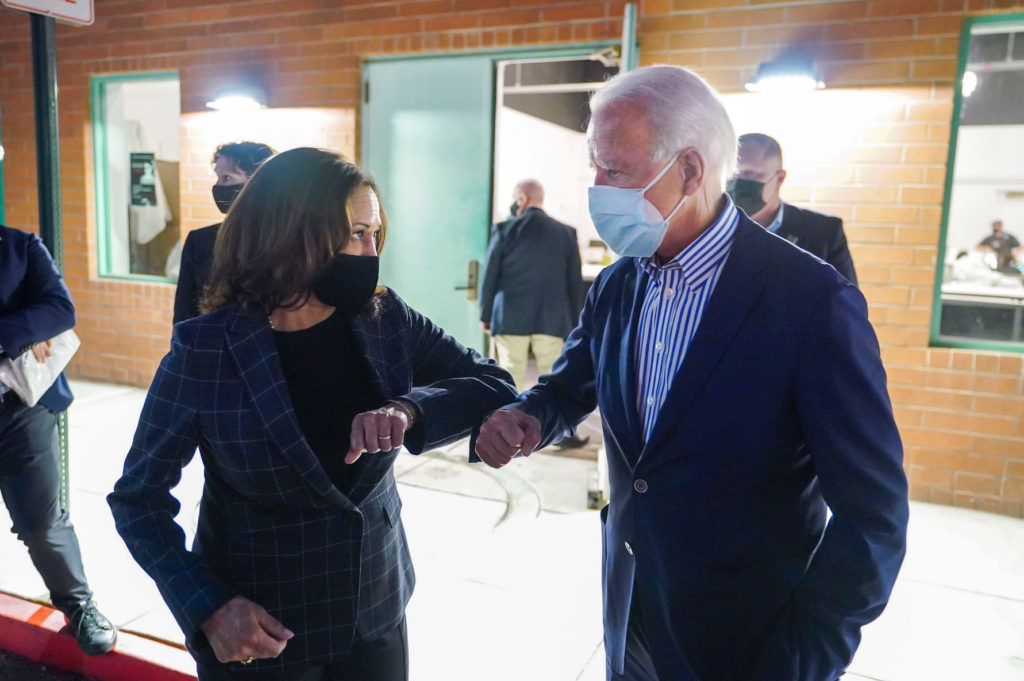
US Elections 2020
Indian-Americans Biding for a Better Future
Joe Biden vs. Donald Trump
[dropcap]I[/dropcap]t’s Zero Hour in a Divided America – election day! Leading up to it, life in America has become stranger than science fiction and more melodramatic than a reality show.
Traumatized by over 200,220 coronavirus deaths, 8.9 million infections and the end nowhere in sight, the country faces a looming economic crash, racial tensions and an environmental crisis with forest fires raging on the West Coast.
Millions of people don’t have jobs, schoo ls are still closed and a fail-proof vaccine is nowhere to be found.
President Donald Trump who has mocked science and the wearing of masks, himself tested positive for COVID-19. Now declaring himself virus-free, he is continuing with large in-person rallies in battleground states which can be super-spreader events as the countdown to Election Day on November 3 begins.
“People are tired of COVID. Yup, there’s going to be spikes, there’s going to be no spikes, and there’s going to be vaccines. With or without vaccines, people are tired of COVID,” Trump said during a call with his campaign staff, according to audio of the call obtained by The Hill. “I have the biggest rallies I have ever had and we have COVID. People are saying whatever, just leave us alone. They’re tired of it.”
Both Dr. Anthony Fauci, the top infectious disease specialist in the US and Governor Gretchen Whitmer of Michigan and their families have received death-threats from extreme elements who scorn mask-wearing and COVID concerns.
In this chaotic scenario, a divided nation seeks to change the tenor of America. For many voters the way out seems to be new calming leadership under the Democratic nominees Joe Biden and Kamala Harris and most Indian-Americans are solidly behind them. The Trump-Pence ticket has some desi support too, especially in the wake of the presidential visit to India and Trump’s closeness to Prime Minister Modi.
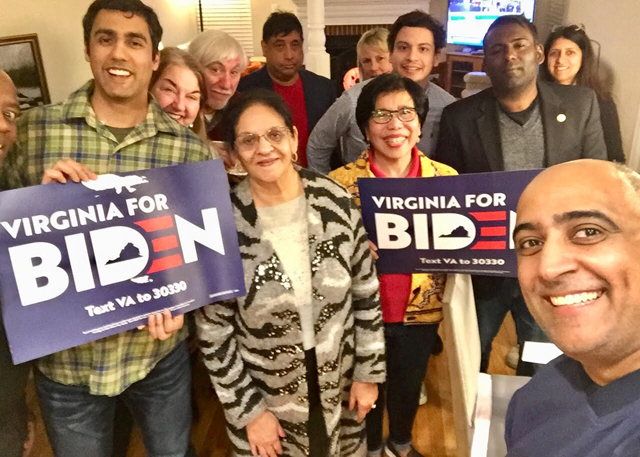
[dropcap]A[/dropcap]ccording to the 2020 Asian American Voter Survey, 65% of Indian-Americans are inclined to vote for Joe Biden while 28% favour Trump. (https://www.apiavote.org/research/2020-asian-american-voter-survey)
This time around with Covid 19 a big player in the elections, not only is the Trump Administration’s role in the failure to control the pandemic on the ballot but the virus has also changed the election climate and dynamics.
In these times of pandemic, Biden’s candidacy was announced from his basement, the DNC as well as the GOP convention were virtual events; the presidential debate was from six feet apart while the vice presidential debate had Plexiglass between the two candidates. There is a judicious mix of real life and virtual events, and Biden and Harris have visited many of the battleground states, masked and apart.
The voters (except for Trump supporters) have no big rallies or live events to attend and home and the laptop screen have become the new venues for interaction with politicians, friends and strangers. Zoom, Whatsapp and Google Meet are just some of the new rallying spaces and spin rooms where ordinary people meet an astounding number of influencers and political bigwigs for panel discussions and chats. In this new world, politics and the elections have become very personal and opting in is just a click away.
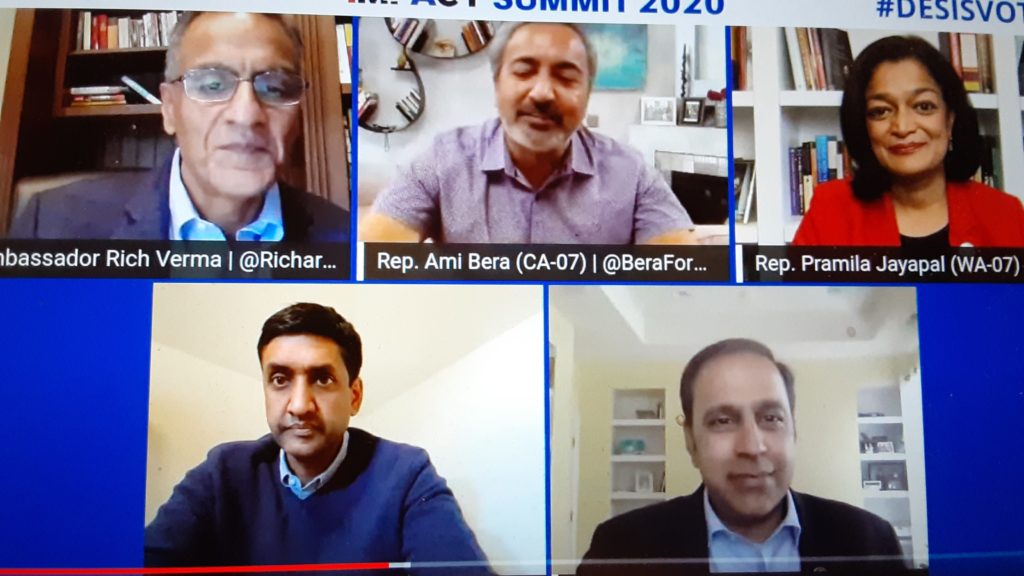
[dropcap]I[/dropcap]n the last month I have met all four Indian-American US Representatives to Congress, Vice Presidential nominee Kamala Harris, her sister Maya and niece Meena, US Ambassador Rich Varma, former US Surgeon General Dr. Vivek Murthy, and scores of political analysts, experts and thought leaders. Each comes into the home and speaks passionately about action and inaction and the need for change.
Indiaspora partnered with AAPI Data on a nonpartisan report that focuses on the Indian American electorate. Dr. Karthick Ramakrishnan, founder of AAPI Data, had some insightful information to share about the Indian-American community: Asian Americans are the fastest growing racial group in the country, and Indian Americans among them are the fastest within that fastest growing category. We’ve had record high turnout in 2018 for the Indian-American population and we’re likely going to see that continue. Indian-Americans are of growing importance in many competitive states and congressional districts.
Seema Nanda, Visiting Fellow, Harvard Law School Labor and Worklife Program, and former CEO, Democratic National Committee, says that Indian-American turnout has almost doubled from the midterms in 2014 to the midterms in 2018. “That’s a staggering statistic to really see the awakening of the Indian-American community and I think it can really be attributed to the results of the 2016 election, You really saw people wake up and see what happens when they don’t all vote.”
She’s seen a massive surge in political awareness and activism in the community which has doubled in numbers since the year 2000. “One of the most fascinating things that I saw in leading the Democratic Party was just so many grassroots groups of Indian Americans with a lot of women doing the work on the ground. And if you talk to a lot of these folks, they didn’t do any of this before 2016 so the election of Trump was a mobilizing moment for the Indian-American community that I think we’re going to really see play out in 2020.”
So where do Indian-Americans stand in the selection of the next president?
They have influence beyond their numbers as they have infiltrated all areas and are a force to be reckoned with, both in brain power and financial muscle. As Neel Makhija, executive director of Impact Fund points out: “Many of us come from families where the reason we’re here was to fill a specific role or industry because of immigration policy but we’re coming of age as a community, and we’re finally getting to a position where we are seeing people up and down the ballot, who are entering public life.”
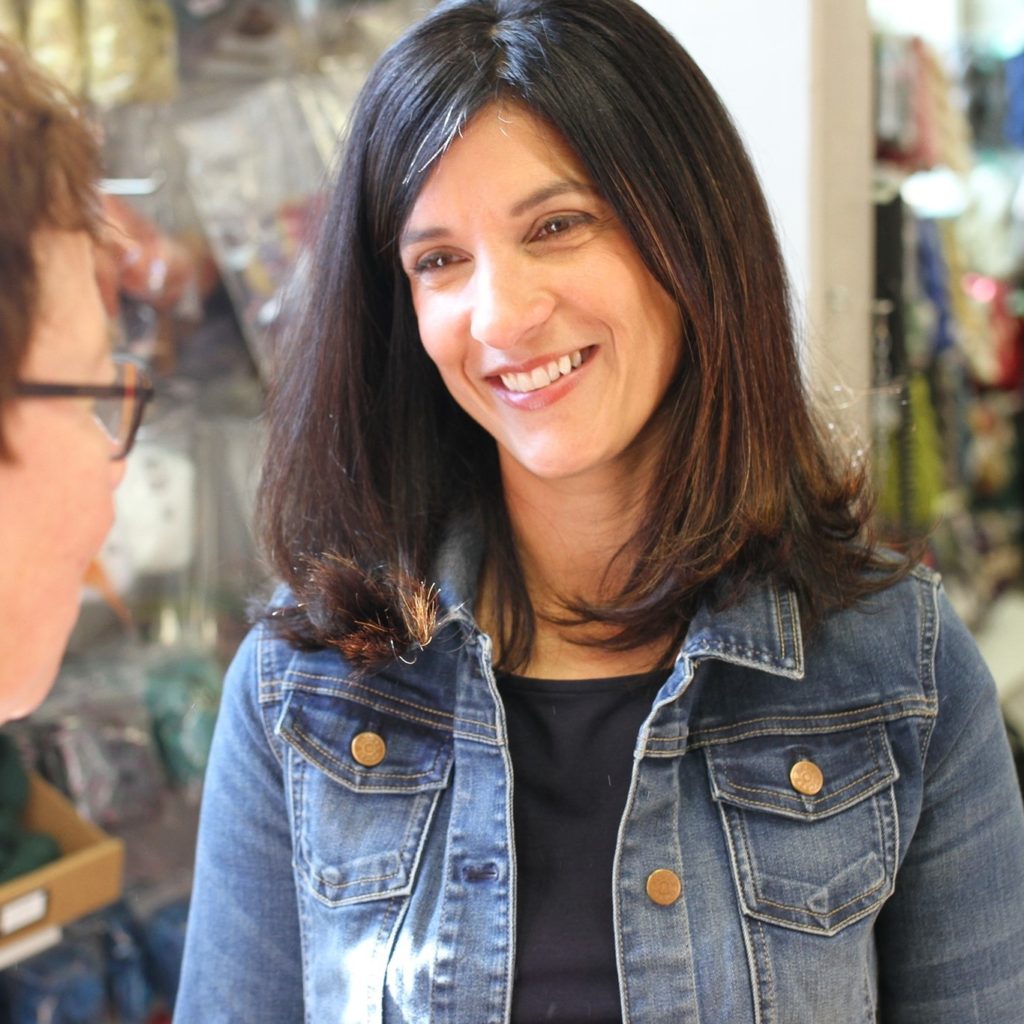
[dropcap]I[/dropcap]n fact, the second generation is particularly active in civic life and there are over 70 candidates in the current elections who are Indian-Americans and anxious to to engage and bring the community together to have a say in American public life and in government. These include Sara Gideon for the Maine senate, Sri Kulkarni (US TX-22) and Hiral Tipirneni (US AZ-06).
While in 2012 there was only one Indian-American member of Congress, Ami Bera of California, in 2016 that increased fivefold with Raja Krishnamoorti in Chicago, Ro Khanna in California, Pramila Jaypal in Seattle, and then Kamala Harris in the Senate from California. “Our community did not increase our population by five-fold in those four years – what happened is that we increased our engagement,” says Makhija.
As Rep. Krishnamoorthi has joked, “We’re the Samosa Caucus. Well, we need more pakoras, more idlis, more vadas – we need everybody in Congress so that Congress looks like America. You can run for local office, city council, state house, state senate and of course, the US Congress, – though please, not in my district!”
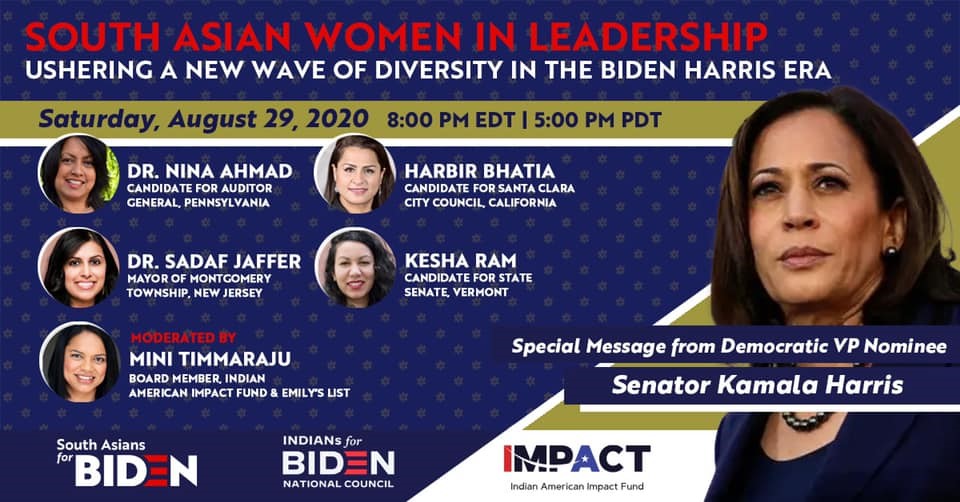
[dropcap]I[/dropcap]n these times of zoom calls, you come face-to-face with famous names in the virtual world. Maya Harris took to the internet to discuss her ‘akka’ who always stood up for her in playground battles and was fully prepared to be everyone’s akka in ths fight for justice and equality.
As she noted, “There is simply too much at stake and let’s be clear about something: The South Asian community can play a decisive role in this election. There is so much power in our community; we literally have the potential to be the margin of victory in several key swing states to propel Kamala and Joe into office.”
As she pointed out in 2016 the Democrats came up just 10,000 votes short of winning the state of Michigan: “There are over 44,000, South Asian voters in the Great Lakes State who could change that outcome this time around. We lost Pennsylvania in 2016 by about 40,000 votes. Well, there are over 60,000 South Asian voters in Pennsylvania who could easily close that gap.”
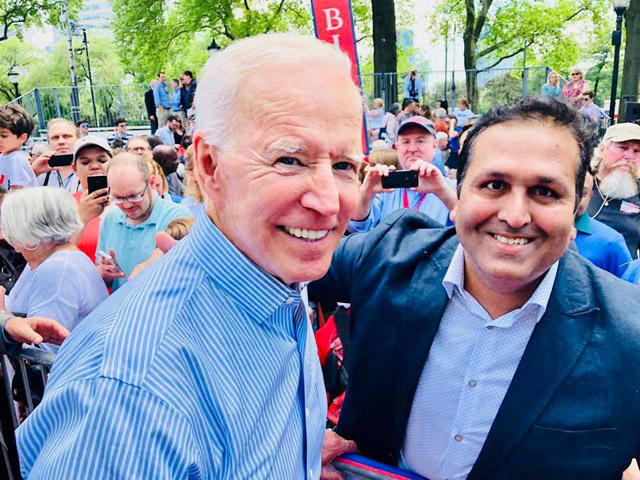
[dropcap]J[/dropcap]oe Biden, the consummate politician and the Nurturer and Caregiver-in-chief is bringing diverse populations together under the Democratic Party’s big tent, from seniors to millennials, from Hindu Americans to Muslim Americans to LGBTQ, from college students to restaurant workers.
There are scores of groups coming together to bring the Biden-Harris ticket to the White House. Besides AAPI (Asian American Pacific Islanders) there are several power players like Indiaspora, AAPI Victory Fund, Indian American Impact Fund and South Asians for Biden, and Indian National Council for Biden.
There are grassroots groups like Sikh Americans for Biden, Muslim Voter outreach, TheySeeBlue, US-India Friendshp Council, South Asian Americans for Voter Education +Engagement +Empowerment (SAAVE) and South Asians of Michigan Organizing for Serious Action (SAMOSA). This abundance of groups has resulted in advocacy and phone banking in battleground states.
There are plenty of people in power positions who can be role models and get the ball rolling such as Mujtaba Mohammed, who is the North Carolina State Senator, Meena Harris, Kamala Harris’ niece, and Dr. Nina Ahmad, nominee for auditor general in Pennsylavania.There is even digital outreach to the South Asian community in 14 languages from Hindi to Gujarati to Malayalam and Oriya. There are even ads appealing to desis – ‘America Ka Neta Kaisa Ho, Jo Biden Jaisa Ho’. There’s even an action video created by musican and activist Roopa Mahadevan which riffs off the popular Indian Matchmaking series on Netfllix, getting the matchmaker Seema Roopaira to find young and beautiful Amrika a suitable partner, given the choice of two suitors – Bidyan and Trumpath!
American Matchmaking with Sima Rooparia – will it be Bidyan or Trumpath?
One of them knows Aunty Kamala!
[dropcap]T[/dropcap]he contribution of Kamala Harris in rallying the Indian-Americans to the Biden campaign, be it in voter enthusiasm or fundraising, cannot be under-estimated. There is a segment of the Indian-American community which feels she’s not Indian enough but largely she has been an asset.
As Rep. Krishnamoothi says, “ I think it’s a huge plus – you see it in all kinds of metrics, whether it’s fundraising, whether it’s the engagement, it’s palpable. Her addition to the ticket made a big difference in those and other areas with regard to Indian Americans. You see pictures of her family and you see your own family in those pictures. It’s really quite striking.”
The excitement for change is bringing an onslaught of funds and support. IMPACT raised $11 million in just three months, and this leading Indian American political action committee is supportng state and national candidates in battleground states across country.
Says director Neil Makhija: “There’s a level of enthusiasm and excitement about this year’s election among Indian American voters that is palpable, and unrivaled in previous cycles. With an Indian American on the presidential ticket for the first time in history, and a record number of Indian American candidates running for office, Indian American voters are poised to exert a considerable amount of influence in this year’s election.”
Coming to Trump supporters, Ramakrishnan of AAPI Data says: “We find that Indian Americans tend to be the strongest supporters of Joe Biden, although Donald Trump has made headway since 2016, where you have 16% of the vote is already at 28% of the vote now. And we project that if the undecideds break in the same ratio, he will probably get 30% of the Indian American vote.”
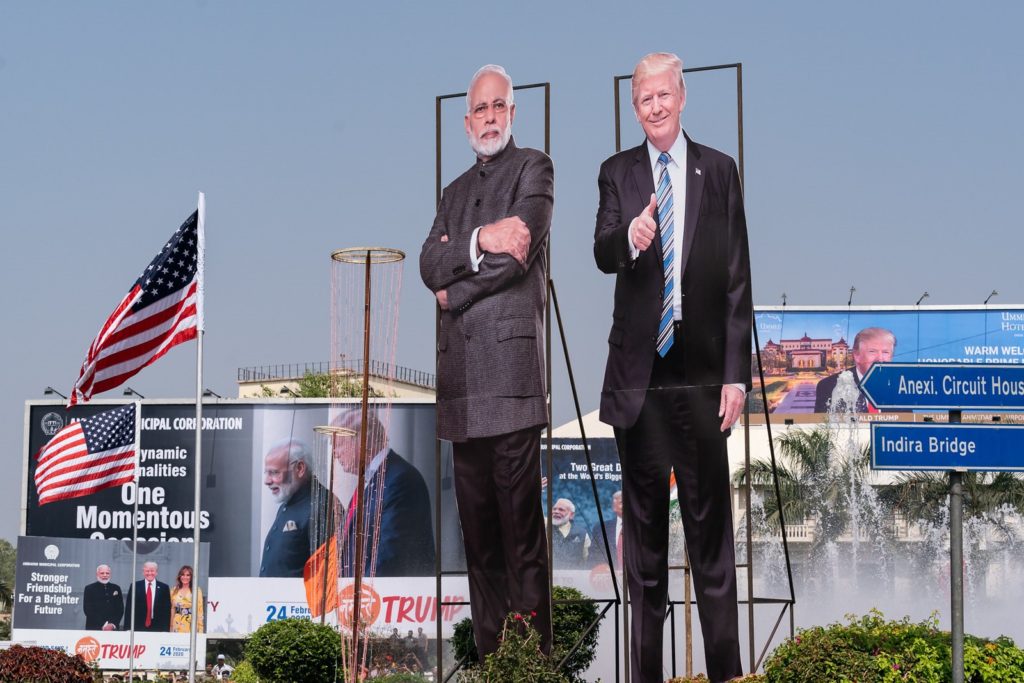
[dropcap]R[/dropcap]ep Niraj Antani, Ohio House of Representatives, is a staunch Republican and one the youngest to be elected in either party. He says: “The President’s outreach and going to India and standing with the Prime Minister and his neutrality on issues like ca and the abrogation of 370, as opposed to Vice President Biden’s opposition to those issues, has polarized the community and that’s why you’re seeing what the data shows.”
While the Trump campaign has made a lot of efforts to reach out to Indian Americans, including the Howdy Modi event which showed the friendship of the president and the Prime Minister of India, will that translate into votes? Will foreign policy count for more than jobs, healthcare and the economy for Indian-American voters?
Raja Krishnamoorthi who is a member of the House Intelligence Committee observes that Joe Biden was the one who helped to shepherd the US India nuclear deal through Congress and through the Senate, when he was the chairman of the Senate Foreign Relations Committee, at a time when it was very difficult to assess the prospects of that particular record, and navigated it successfully. He points out that President Barack Obama had a very close relationship with Narendra Modi, and also believes that the US India relationship is bipartisan or nonpartisan and is growing stronger.
“It is taking on new importance, especially with regard to our own country’s views of our national security vis a vis the Chinese government in the Indo-Pacific region. And for that reason I can tell you for a fact that our national security is bound up with the security of India and as a consequence and because of the growing relationship. I think that Joe Biden, along with future presidents will grow closer to the governments of India and that is a natural progression.”
Rep Antani agrees that the Indian-American percentage of Republicans won’t shoot up from 28% to 70 % but it’s all about creating a coalition so if it goes from 28% to 38%, that could well be part of a coalition to win a state.
Indeed, the unpredictability of the voting process keeps the community on its toes as to make a difference in the outcome one actually has to go out and vote. Young people and women have come out in large numbers as activists and advocates to bring about change. As the countdown to the election approaches, you see Indian-Americans involved in grassroots efforts, especially in the battleground states There are plenty of people in power positions who are role models and get the ball rolling virtually such as Mujtaba Mohammed, who is the North Carolina State Senator, Meena Harris, Kamala Harris’ niece, Dr. Nina Ahmad, nominee for auditor general in Pennsylavania – all battleground states where it’s a tough fight and Indian-Americans can tilt the power.
If they could throw a seven day big fat Indian wedding to attract the community to vote, they would – so enthusiastic are they to have a Biden-Harris win. Meanwhile the team attracted more than 1300 South Asians from around North America for the South Asian Block Party, an official fundraiser in support of the Biden Victory Fund.
The event which was put together by South Asians from television, film, music and entertainment, energized young voters and raised $250,000 from this virtual event with names like Preet Bharara, Aasif Mandvi, Mindy Kaling, Kumail Nanjiani, Madhur and Sakina Jaffrey. This campaign also encouraged young people to help their parents and other relatives vote in a year when the process has become complicated with mail-in votes and the virus.
Among Indian-Americans there is feverish activity as early voting has already begun and there is concern this year especially in the battleground states where a drop in voter registration can mean the difference between failure and success. Will there be ballot rigging and mailbox tampring? You see young Indians all over social media and on the Internet, organizing phone banks and working on bring out the vote strategies.
Nisha Biswal, who had a long innings with the Obama Administration, is confident that a Biden administration will see India as being a central part of all of goals and objectives, and a partnership that is at the very top, in terms of priorities for the United States. She says, “The US-India relationship was the defining partnership of the 21st century and I think Joe Biden and Kamala Harris will certainly put India as amongst the very top of priorities as they look to strengthen America’s standing in the world.”
The mantra for a Democratic victory at the polls, according to Seema Nanda is simple: “Outreach, outreach, outreach.” As she cautions, nothing should be taken for granted, pointing to the fact that the 2016 election was lost by just 70,000 votes, across three states – Wisconsin, Michigan and Pennsylvania.
She says, “You know we lost by 10,000 votes in Michigan, and The Indian American vote is 10 times that. So that’s why every single vote is going to matter, and you see an over-representation of Indian-Americans in these battleground states. It is a vote that research shows absolutely cannot be taken for granted.”
Yes, in this crucial battle to save America’s soul, the challenge is simply for enough passionate Indian-Americans to show up and vote.
Fast Facts about the Election

- Asian Americans are the fastest-growing racial or ethnic voting bloc in the country.
- There are projected to be 4 million Indian American voters in this year’s election.
- Indian Americans register and vote at higher rates.
- This year, there will be nearly 500,000 Indian American voters in the battleground states of Florida, Pennsylvania, and Michigan.
Source: Impact
(A version of this article first appeared in The Week)
